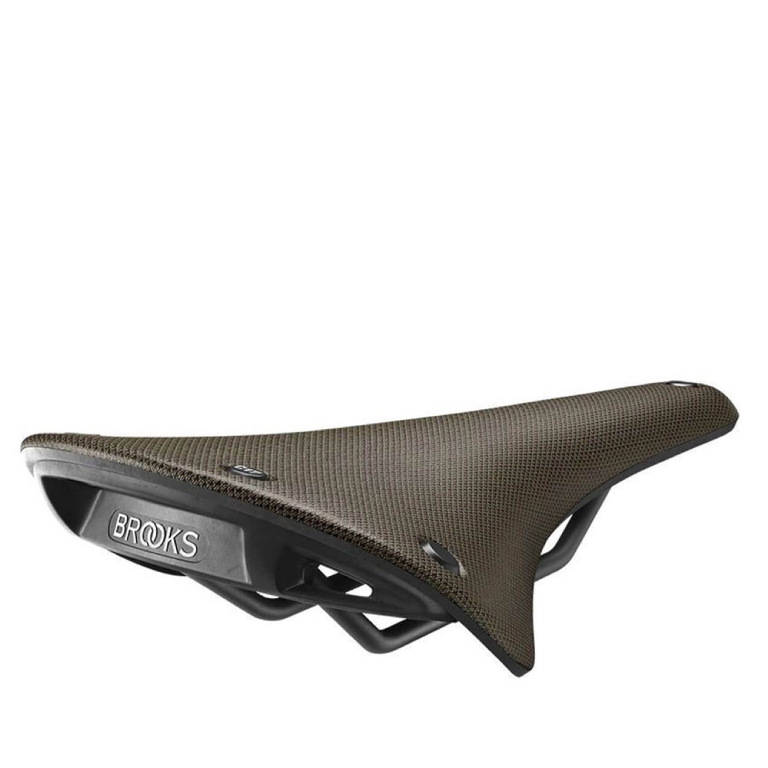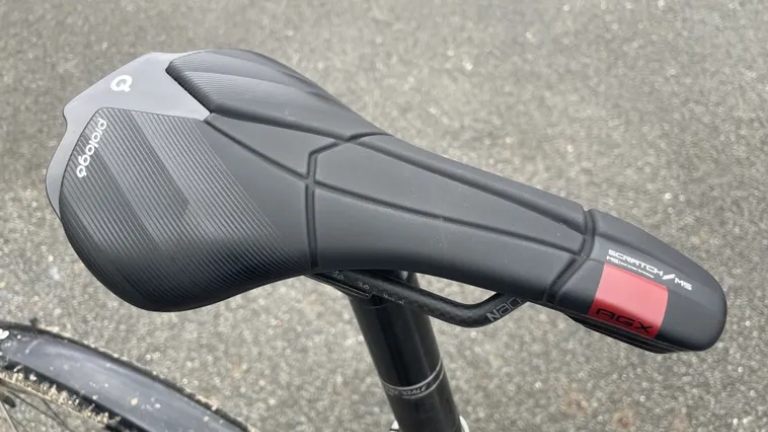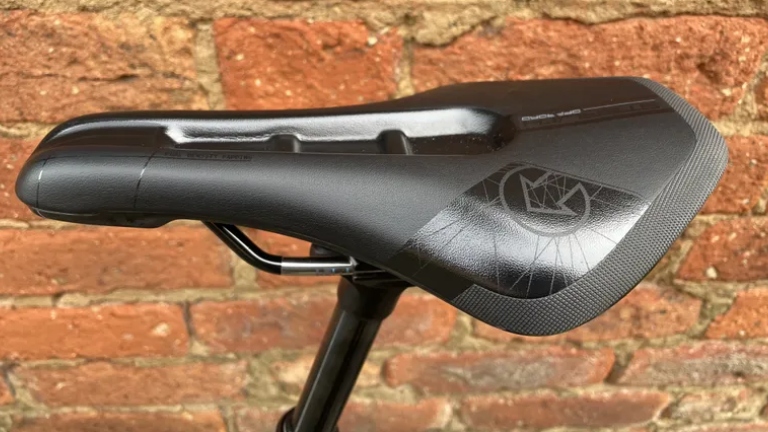Best saddles for gravel: performance, comfort and durability for riding off road
Combining off-road comfort and support with on-road performance, it's well worth having a look at these gravel-specific saddles

Best gravel saddles: Jump menu
In comparison to bikes, clothes and other components, the gravel-specific saddle market had been slow to evolve. But fear not, nowadays there's a great choice of saddles that combine the best properties of drop-bar models with the shock absorbency and durability of mountain bike versions. This guide showcases a few of our favorites, each boasting different features at varying price points.
Choosing a saddle has always been a tricky job. There are seemingly endless options to match all the combinations of anatomy, styling, riding style and budget that you can imagine. As well as this guide, check out how to choose the right saddle for you which has lots of tips and things to look out for.
If this is still not enough, we also have best men's and best women's saddle buying guides.
The quick list
Here's a quick run-through our favorite gravel saddles. There's a link on each which will take you through to more detail.

Best for rough terrain
The Flite's gel layer and titanium rails produce excellent shock absorbency which combine with the large Superflow cut-out to reduce pressure when riding in the drops.

Best for grip
The short-nosed Argo saddle has a wave shape and grippy finish to stop you slipping in the saddle and allowing you to push harder.

Best for hard and fast riding
Incredibly lightweight, incredibly responsive and incredibly fast. This is a saddle for those who love the freedom and speed of riding hard without anything to hold them back.

Best for classic style
It might not be leather, but it most definitely has classic Brooks style. It's also incredibly comfortable and has plenty of durability against wet and gritty conditions.

Best for versatility
The Scratch has a little bit of a lot of things that combine for a great ride whatever your terrain choice. The paneled cushioning provides excellent comfort whether you're spinning through the miles or perched on the saddle's nose smashing the climbs.

Best for comfort
The Power Pro combines unrivalled Mirror comfort with a supportive shape which still allows you to ride in lots of positions. This could be a perfect gravel saddle if the matrix construction didn't hold the dirt quite so well.
Best for damping

Selle Italia Flite Boost Gravel TI 316 Superflow
1. Selle Italia Flite Boost Gravel TI 316 Superflow
Our expert review:
Specifications
Reasons to buy
Reasons to avoid
Given Selle Italia has around 16 versions of the Flite saddle it should come as no surprise that there is now a gravel-specific version added to the range. At first, it's easy to see the Flite Gravel as just a marketing exercise. However, taking a bit of time to look beyond this you realize it's a combination of various features that are best suited to longer drop-bar off-road rides, a sort of merger of the Endurance and MTB versions of the Flite.
The Superflow channel provides pressure relief to the perineum when in the drops, particularly important on chattery terrain. Additional shock absorbency comes from a combination of gel inserts and titanium rails. The covering material is Fibra-Tek which offers increased durability against gritty abrasion.
We were really impressed by the comfort of the Flite, the Superflow shape and choice of widths meant that weight was through sit bones where it should be. The shorter length (250mm, standard across all Flites) allowed good movement around the bike although it means your weight isn't so far forward if you want to perch on the nose of the saddle on steep climbs.
Read more: Selle Italia Flite Boost Gravel TI 316 Superflow full review
Best for grip

Fizik Argo X3 Gravel
2. Fizik Terra Argo X3
Our expert review:
Specifications
Reasons to buy
Reasons to avoid
The Fizik Terra Argo X3 is the off-road version of Fizik's short-nosed Argo saddle range. The short nose allows for plenty of movement around the bike. Combining the short length with the cut-out channel gives decent pressure relief when you're down on the drops.
Off-road comfort comes through the inherent flex in the body of the saddle and the one-piece looped rail which flexes to absorb the rough.
The standout feature of the Terra Argo is the planted position and grip it gives, a result of its wave shape and grippy finish. This stops you from sliding around in the saddle and so, in theory, gives a more solid platform to get the power through the pedals. On the downside, this limits small adjustments when you're riding so may not suit a more fidgety rider.
Read more Fizik Terra Argo X3 gravel saddle full review
Best for hard and fast riding

WTB Gravelier
3. WTB Gravelier
Our expert review:
Specifications
Reasons to buy
Reasons to avoid
The Gravelier represents quite a different approach for WTB in its saddle design. It has a large central cut-out instead of the usual central depression and has a lower profile with less padding. Combined with its prominent wave-shape, short nose and flex within the carbon body, these design elements optimize comfort and support whilst riding hard in the drops. The carbon-railed version we rode is astonishingly light too, a mere 157g.
The svelte Gravelier both looks and rides fast. It's firm and reactive and its lack of padding allows for lots of movement around the bike and gives plenty of feedback. It's akin to racing in full lycra rather than donning your baggies for a more relaxed jaunt.
The front-to-rear curvature of the saddle and flex of the carbon body ensures comfort. Having said that, after a couple of hours in the saddle the lack of padding is noticeable so you may want something with a bit more cushioning if your rides are on the longer side. We expect our carbon-railed version to have more of a direct feel than the lower-priced stainless and chromoly-railed versions.
Best for classic style

Brooks C17 Carved
4. Brooks C17 Carved
Our expert review:
Specifications
Reasons to buy
Reasons to avoid
In addition to producing the most quintessential leather saddles, Brooks is also keeping apace with the gravel bike revolution.
Instead of leather, the C range of Brooks saddles features a durable rubber upper. Despite the absence of leather, the C17 is most definitely Brooks, featuring the same shaping and iconic rear rivets. Gravel hipsters look no further.
As well as giving the C17 lots of durability, the rubber upper also provides natural flex and shock absorbency for off-road riding. There are two versions available, either with or without a cut-out for pressure relief.
Despite the rubber's firm feel and lack of padding the C17 is (surprisingly) an incredibly comfortable saddle to ride. Its curved shape provides even support on the tops and the drops so we didn't get any issues with uneven weight bearing. It does a brilliant job of absorbing all the chatter of rough trails too. So much so that we regularly forgot we were riding a different saddle than usual.
The only real drawback of the C17 is its weight, at 446g it's around twice as heavy as most of the other saddles in this guide.
Best for versatility

Prologo Scratch M5 AGX
5. Prologo Scratch M5 AGX
Our expert review:
Specifications
Reasons to buy
Reasons to avoid
The Scratch M5 AGX is Prologo's "Adventure, Gravel, XC" version of the road-orientated saddle. As the name suggests, the saddle has great versatility rather than suiting one type of off-road drop bar riding over another.
The Scratch is 140mm wide, has carbon (tested) or steel rails, a carbon shell and distinctive paneled padding. There's a "Space" version of the saddle too which is slightly wider (+7mm) and has thicker paneling.
Unlike some of the other saddles in this guide, the Scratch has a more traditional flat profile that provides pelvic support in a range of riding positions. Crucially it means it's also comfortable whether you're racing hard in the drops, or spinning along in a more upright position. The downside is that there's less support in any single position which more static riders may prefer. The nose of the saddle is slightly dropped and well cushioned so you won't get uncomfortable whether you're rotated forward or perching right on the end up a climb.
The paneled design allows different types and densities of padding across the saddle, putting the right cushioning in all the right places. Combined with the design of the shell, the Prologo provides excellent vibration damping.
The shell protrudes slightly at the back to form a small fender. If you're likely to be riding off the back in baggies you may find this feature more of a hindrance than a help.
Best for comfort

6. Specialized Power Pro with Mirror
Our expert review:
Specifications
Reasons to buy
Reasons to avoid
We've yet to find a review that doesn't agree that Specialized's 3D Mirror printed saddles are exceptionally comfortable. And so where better to look for a gravel saddle where the need for comfort and cushioning is at a premium?
The Power saddle is shaped for versatility. It has a gentle fore-aft curve so allows plenty of movement but with some support. It's pretty short (240mm) and the nose falls away for good comfort in the drops.
The matrix structure of the Mirror is exceptionally comfortable and does a brilliant job of damping the vibrations from the rough gravel trails. It really does allow you to ride off-road for longer and in more comfort.
But, it's not without its downsides (as well as the well-known price tag). Firstly, we found that the matrix material is so grippy that it restricts smaller weight-shifting movements that are necessary off-road. Additionally, the matrix structure is not great when it comes to mud and grit. The open shell under the saddle means muck can work its way in from underneath as well as from the top and its a near-on impossible to clean all those nooks and crannies.
Best for set-up

PRO Stealth Off Road
7. PRO Stealth Offroad saddle
Our expert review:
Specifications
Reasons to buy
Reasons to avoid
It might not be obvious at first glance, but the PRO Stealth is a saddle that's designed for going fast. It's shaped for riding in an aggressive forward position with enough padding and compliance to absorb the chatter but not restrict the power. It's impressively lightweight too (the 142mm version we tested weighed in 203g).
As you might imagine from this, it suits short, hard rides, and gives your position a real sense of purpose. On the downside, something is lost to comfort for longer - and perhaps less frantic-paced riding when a little less rigidity might be welcome. It's probably not the best choice if you measure your rides by miles rather than miles per hour.
Rather than a full central cut-out, it has a lower middle section. We didn't have any issues with undue pressure on soft tissues but it may not be enough relief for some riders.
Away from the saddle itself, one clever feature of the PRO packaging is a brilliantly simple and effective cut-out part of the cardboard packaging. Combined with a tape measure it makes it easy to fit your new saddle in the same position as the one you removed.
Buying advice
Do I actually need gravel specific saddle?
No, you don't. If you're comfortable using your usual choice of saddle then there's no reason to change. But there are some good reasons that you might want to ride something a little different from what you have on a road, hybrid or mountain bike.
Whilst road-orientated saddles work well for the drop bar position, they may lack the shock absorbency and durability to cope with off-road conditions. Less shock absorbency could mean shorter, less comfortable riding. Poorer durability might lead to you replacing your saddle more often than you'd like.
In comparison, a MTB saddle will have much better durability and shock absorbency but its flatter shape may not be comfortable for riding low in the drops as they are designed to be used in a more upright position.
Like the riding itself, a gravel saddle is a hybrid approach, combining aspects of road and off-road designs.
What should I look for when choosing a gravel saddle?
1. Shape
Whatever riding you do, saddle shapes will suit different pelvic shapes and sizes so there's no single perfect shape. But, there are a few rules of thumb that can help you choose a good saddle for you. Road-orientated saddles are often shaped with a forward-to-back curve to better fit your pelvis in its anterior rotated position as you reach forward into the drops. Given the similar position your body is in when you're gravel riding this shape may be better than a flatter saddle that is designed for an upright riding position.
On the flip side, an MTB saddle is often shaped to allow you to move around more on and off the saddle to help negotiate the uneven trails whereas a more scooped position can make it harder to shift yourself around.
2. Width
Probably the most important factor in choosing a saddle is getting one the right width for your pelvis. Many manufacturers have simple in-shop and at-home equipment and guides to help you choose.
Sadly when it comes to gravel saddles the choice of different widths remains quite limited, several in this guide are only available in a single width. We expect things to improve but, until then, you may prefer to stick with a saddle that's the right width for you rather than spend money on a gravel saddle that doesn't fit.
3. Length
Short, long or something in between? One approach is to choose a shorter-length (nosed) saddle. In theory, this helps relieve pressure on your delicate soft tissue when you're down on the drops. Some riders also prefer that they have a bit more space to move around without getting caught on the nose of the saddle.
Conversely, a longer-nosed saddle can be useful for tackling steep, rough terrain as it allows you to perch forward to keep the power through the pedals and front end of the bike down. Thinking about the type of trails you'll be riding might help you choose the best length.
4. Cushioning and flex
An important feature of a gravel saddle is how well it can absorb the chatter of the trail under your wheels. Good shock absorbency will allow you to keep pedaling in the saddle over the rough stuff as well as keep you riding longer in comfort.
Shock absorbency isn't all about fancy gel cushioning. Much of it comes from the properties of materials in the rails and shell of the saddle as well as its overall shape and construction.
Manufacturers favor different approaches; you'll notice design aspects such as different shell materials, flexible 'wings' and different rail designs in addition to various cushioning types.
5. Durability
Gravel saddles are subject to quite a bit of wear and tear as abrasive grit and water is sprayed up from your back wheel and gentle rubbed in by your bum. Over time this can wear the saddle outer which further increases friction, ruins the aesthetic and eventually wears the outer away. To combat this, some manufacturers use a more robust outer layer and even reinforced fabrics on particularly vulnerable parts.
How we test
'Bums on seats' is the simple answer. As emphasized in the reviews, saddle comfort is highly subjective, but other elements such as size options, materials, weight and durability have been assessed more objectively to give a great starting point when considering a new saddle.
The latest race content, interviews, features, reviews and expert buying guides, direct to your inbox!
Rachel has been writing about and reviewing bike tech for the last 15 years. Cynical by nature, Rachel never really trusts the marketing hype and prefers to give products a mighty good testing before deciding whether they're worth buying or not.
Rachel's first riding love is mountain biking where she's been European and UK 24hr Champion on more than one occasion. She's not just confined to the trails though and regularly rides - and occasionally races - on gravel and road too.